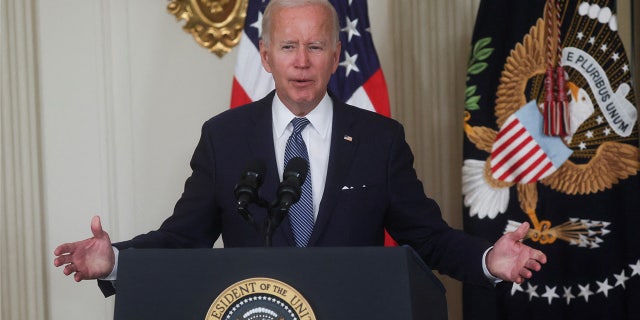Quebec pension fund manager Caisse loses $33.6-billion in first half of 2022
Roiling world markets have taken their toll on Caisse de dépôt et placement du Québec, as the pension giant lost $33.6-billion in the first six months of 2022 – including a controversial US$150-million wipeout in a major cryptocurrency investment.
The Caisse’s 7.9-per-cent loss was better than the 10.5-per-cent loss in its benchmark – a portfolio of similar assets it uses to measure its performance. The performance, however, caused the Caisse to fall from nearly $419.8-billion in assets at Dec. 31, 2021, closing its books June 30 with $392-billion in its portfolio. (The investment losses were offset by $5.4 billion in contributions and new funds from the Caisse’s investment clients.)
Charles Emond, chief executive officer of the Caisse, said Wednesday the pension fund would completely write off its US$150-million investment in Celsius Network Ltd., which filed for bankruptcy protection in July. The New Jersey-based company, with almost two million customers, had long touted itself as the “world’s leading crypto earning and lending platform,” offering interest rates as high as 17 per cent to depositors. It was one of a number of cryptocurrency companies that imploded in a sector-wide reversal.
The Caisse bought in as part of a US$400-million funding round that valued the company at about US$3-billion late last year. Mr. Emond said Wednesday the Caisse’s investment in crypto has now proved to be premature.
“In this case, we came in too early … I’d say maybe there was too much focus on the company’s potential than on the real state of affairs,” he said Wednesday in French. “We knew there were challenges in terms of the company’s organization, the necessary regulation. But maybe we underestimated the time and efforts required given the company’s very significant growth.
“We had good intentions” with this investment, Mr. Emond said, and the Caisse isn’t the only institutional investor in the world to have to invested in the sector, he noted. “What interested us was to seize the potential of blockchain technology and contribute to regulating the sector. Clearly that didn’t happen as anticipated.”
The Caisse is weighing its legal options, he said, but did not provide further detail. He said the Caisse has assembled its staff involved in the investment to do a postmortem. “We take away an enormous amount of lessons from something like this … Due diligence can be the best there is, but it’s not always a guarantee of success. Otherwise all investments would work out well.”
The Celsius flameout represents about 0.5 per cent of the Caisse’s year-to-date loss, but it was the topic of many of the questions Mr. Emond faced Wednesday as he spoke with reporters to discuss the first-half results.
Mr. Emond said the first half of 2022 was the worst six-month period of the past 50 years for stock and bond markets, with bond markets turning in their worst performance since the 1920s. Royal Bank of Canada’s RBC I&TS All Plan Universe saw defined benefit pension plan assets – as measured by a typical mix of publicly held stocks and bonds – shrink 14.7 per cent over that period.
“We saw a rare and simultaneous correction of equity and bond markets that fell between 10 and 30 per cent,” he said. “Also hikes in interest rates that were among the most aggressive in recent history by central banks to contain the biggest inflation push in 40 years. All of this happened amid worries of an economic slowdown in an extremely volatile geopolitical context.”
“We’re never pleased with a negative return, but the execution has allowed us to do better than the markets,” Mr. Emond said. He said the Caisse has outperformed its benchmark by shifting strategies, and then executing on them, during the past two years.
Over five and 10 years, annualized returns were 6.1 per cent and 8.3 per cent respectively, also outpacing benchmark portfolio returns of 5.3 per cent and 7.3 per cent, respectively.
The Caisse is the second of three major Canadian pension plans with Dec. 31 fiscal years expected to report half-year returns in 2022. On Monday, Ontario Teachers’ Pension Plan reported a 1.2-per-cent return for the six months ended June 30.
Teachers has a little less than half of its assets in equities and fixed income, with roughly 20 per cent of its portfolio in what it calls “inflation sensitive” assets, designed to perform better in inflationary environments. By contrast, the Caisse had 75 per cent of its assets in equities and fixed income at June 30.
Over six months, the Caisse posted a 13.1-per-cent loss in fixed income, compared to a 15.1-per-cent loss for the segment in its benchmark portfolio.
Real assets, a class that includes the real estate and infrastructure portfolios, generated a 7.9-per-cent six-month return, significantly higher than the return of 2.4 per cent for real assets in the benchmark portfolio.
The real estate portfolio recorded a 10.2-per-cent return in the first six months compared with 11.4 per cent in the benchmark portfolio. The Caisse has been repositioning real estate after a heavy weighting in shopping centres drove it to losses in that segment in 2019 and 2020. The weighting of real estate is now the smallest sector in its portfolio, at 12 per cent, versus 22 per cent, the largest sector in the portfolio in January, 2020.
The infrastructure portfolio generated a 5.8-per-cent return over six months, beating the benchmark portfolio’s 5.5-per-cent loss.
The equities asset class, which includes the equity markets and private equity portfolios, generated a six-month loss of 10.6 per cent, which was above the benchmark portfolio’s 11.9-per-cent loss.
The equity markets portfolio recorded a six-month loss of 16.0 per cent, better than the benchmark portfolio’s 17.2-per-cent loss.
The private equity portfolio’s loss was 2.4 per cent, above the 4.1 per cent loss in the benchmark portfolio.
The Ontario Municipal Employees Retirement System (OMERS) is expected to release its results this week. Alberta Investment Management Corp. now releases quarterly results, one of just two members of the “Maple Eight” group of large pension managers to do so – Canada Pension Plan Investment Board being the other.



